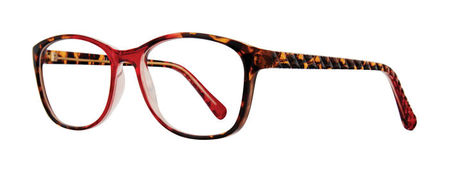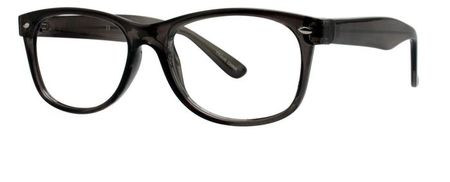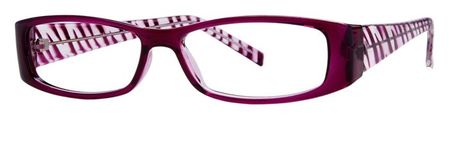Reading Glasses Tempe City - Non-Prescription Glasses vs Reading Glasses
Tempe, city, Maricopa county, south-central Arizona, U.S. It lies along the Salt River and is a southern suburb of Phoenix. First settled (1872) by Charles Hayden, father of former Arizona senator Carl Hayden, it was called Hayden’s Ferry until renamed in 1880 for the Vale of Tempe, Greece. It is the site of Arizona State University (1885), whose campus contains the Grady Gammage Memorial Auditorium, designed by Frank Lloyd Wright. After World War II Tempe experienced marked residential and economic growth with light-industrial development. The city’s economic activities, once centered on agriculture (through the Salt River Irrigation Project), are now based on manufacturing, trade, and high-tech industry; most of the city’s farmland was given over to residential and commercial development in the 1990s. Tempe is the home of the spring training camps of the Arizona Cardinals (professional football) and the Los Angeles Angels of Anaheim (professional baseball).
Non-Prescription Reading Glasses: How Safe are They?
As an optometrist, I spend the better part of the day prescribing reading glasses for different reasons. The most common reason is to help my patients see better up close so that their books, computers, tablets, and smartphones are crystal clear. And often, I get questions about whether or not off-the-rack reading glasses are safe to use.
Can Reading Glasses Hurt Your Eyes?
No, there is no clinical evidence that non-prescription reading glasses will harm your eyes or vision. If you’re over 40 years old with no distance prescription, astigmatism, or any underlying pathology then it’s a safe bet that nonprescription reading glasses will work for you. However, if the magnification is under or over what you need, that will eventually cause other problems like eye strain, tearing, redness, and headaches.
How to Find the Right Magnification
If you currently have off-the-rack reading glasses, take the power you already have and go one power up and one down. For example, if you have a +2.00 then go +1.75 which is down, and +2.25 which is one up. You can go further than one power if you're curious about the right power for you. Additionally, you can download the readersusa.com eye chart to help find your perfect magnification power.
As always, it’s a good idea to visit your nearest eye doctor if you feel your reading glasses are not working and what you’re reading is still blurry. A routine eye exam may uncover some pathology not seen before. You can read more about eye exams here.
Choosing the Correct Lens Type
Reading glasses these days are not just used for functional purposes, but, also for fashion. So, it’s easy to think of the readers frames and the magnification as the determining factors in choosing your eyewear. But choosing the right lens is important. The lenses you pick must be clear enough for you to see through. This is common sense, but it’s so easy to get caught up with how the frame looks that this obvious fact gets overlooked. Good lenses do not chip, bubble, or distort so look for that when you are purchasing your eyewear. In addition, poor-quality lenses cause reflections and distortions which may cause eye strain, tearing and headaches. It would be a shame if your frames looked great but you couldn’t see well out of the reading glasses because the lenses were not of equal quality. So, spend a little extra and get anti-reflective lenses to reduce the glare and distortions, or purchase lenses that are slightly tinted. Both counteract the effects of glare and make your eyes more comfortable especially when looking at computer/laptop screens, tablets, and smartphones.
Putting it All Together
I know this is a lot to think about and it will take some effort, but it’s well worth it. At the end of the day, non-prescription reading glasses are safe. Paired with the ideal lens type, it’s always best to ensure you are using a reader with the correct magnification for your vision needs. And lastly, if you’re reading glasses are not working for you, it’s time to visit your local eye doctor for a routine checkup.
Prescription Glasses vs. Readers
Just to be clear, when we talk about readers, we’re referring to magnified, non-prescription readers. Prescription glasses to treat presbyopia are made specifically for your eyes. If one eye is noticeably weaker than the other, or if you have astigmatism, getting a prescription is important for the long-term health of your eyes. Non prescription magnifiers are available at pharmacies, supermarkets, convenience stores, and many other places. They are glasses with ready-made magnification strengths that start at 0.50 diopters and go up in increments of 0.25 or 0.5. The more magnification your eyes need, the higher the diopter quantity you will choose. According to the London-based College of Optometrists, ready-made reading glasses are acceptable as a temporary or occasional substitute for prescription reading glasses. But they recommend that you have at least one prescription pair of glasses that have been fitted to your eyes. If you’re ordering reading glasses online, it’s important that you have an estimate of your prescription strength for reading glasses. This can help you avoid returning and exchanging multiple pairs of readers with online retailers. Otherwise, there may be more of a trial-and-error process to figure out the magnification strength you need.
How we chose
Here are the features we considered when making our list of reading glasses you can buy online:
- User reviews: 0 boil down the list, we read through hundreds of reviews and looked at what customers love about each pair, and why.
- Company reputation: We wanted to highlight companies that are known for providing a customer service experience that’s seamless, and who are responsive to fixing issues with orders that aren’t quite right.
- A wide range of price points: We tried to provide options on this list that will work for you, even if you’re on a tight budget.
Red flags: We checked to make sure each company was free of red flags or warning letters in the Food and Drug Administration (FDA) database. The FDA publishes guidelines Trusted Source for manufacturing practices for spectacles and sunglasses and sends warning letters when manufacturers don’t comply.






